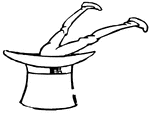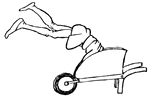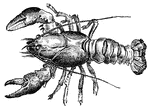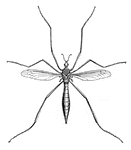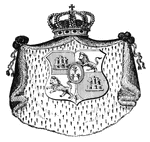
Edward Lear
There was an old man of Coblenz; The length of whose legs was immense; He went with one prance; From…
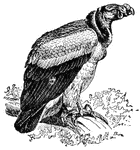
Vulture
In vultures, the head and neck are bare, the beak is long and curved at the tip, legs are powerful,…
Centipede
Centipedes have flattened bodies, with one pair of legs to each segment. They are carnivorous.

Centipede
This Centipedes has a flattened bodies, with one pair of legs to each segment, but it has less than…

Octopus
As the name indicates, the octopus has eight arms instead of ten, as in the squids and cuttles.

Mud Puppy
The mud puppy has two pairs of legs. It also has persistent external gills. It can attain a length of…

Mole
Moles are well fitted for digging by the very large front feet and strong muscles of the front legs.…

Starfish
The common starfish is a five rayed star. The central body is called the disk and the arms are the rays.
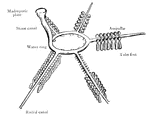
Starfish
The common starfish is a five rayed star. The central body is called the disk and the arms are the rays.…
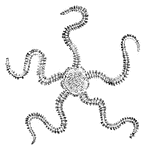
Brittlestar
The arms of the brittlestar are more flexible than those of the starfish. They move by lateral movements…
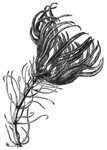
Sea Lily
An ancient crinoid, sea lilies are flowerlike, with branching arms surrounding the central mouth.

Stone Lily
An ancient crinoid, stone lilies are flowerlike, with branching arms surrounding the central mouth.
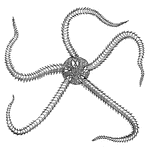
Sea-star
Sea-stars are Echinoderms. The order Ophiuroides is closely related to starfishes. The arms of sea stars…

Lobster
Common lobster. I. first pair of legs; 2 and 3. second and third pairs of legs; 4 and 5. last two pair…
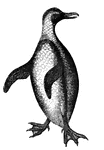
Penguin
Penguins are adopted for a completely aquatic life. The body is boat-shaped, the neck long, and legs…

Spanner Caterpillar
Caterpillars are insects that are cylinder and are divided by rings into 13 segments. The spanner caterpillar…

Evacuation of Corinth
Evacuation of Corinth, Mississippi- burning of stations, warehouses and supplies- entry of Federal Troops.…

Human Brain
Side diagram of the human brain showing which parts of the brain control hearing, speech, vision, legs,…

Tom, Tom, The Piper's Son
He met Old Dame Trot with a basket of eggs. He used his pipe and she used her legs.
!["First and last review of the First Regiment, South Carolina [African American] Volunteers, on Hilton Head, S. C., under Colonel Fessenden, U. S. A., June 25th, 1862. Our correspondent at Hilton Head wrote us: "I witnessed the parade entire, as well as the company drills in the manual of arms, etc., afterward, and I must acknowledge my complete surprise at the discipline and even vim evinced by the sable crowd. Dressed in the regulation uniform of the United States Army, tall and strong men generally speaking, they, considering that the regiment had not been fully armed but about ten days, spoke well for officers and men."" — Frank Leslie, 1896](https://etc.usf.edu/clipart/11000/11043/1stregiment_11043_mth.gif)
First Regiment
"First and last review of the First Regiment, South Carolina [African American] Volunteers, on Hilton…

Michael Corcoran
"General Michael Corcoran, born in Carrowkeel, County Sligo, Ireland, September 21st, 1827, died near…
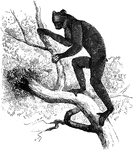
Indri
"Genus Indri: Indris. - This genus includes only a single species, the Short-Tailed Indri of Madagascar,…
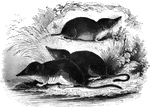
Shrews
"Is about the size of a rat.. Their legs are of equal length, and terminate into five toes, which are…
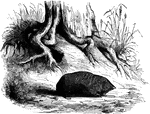
Chrysochloris Aurea
"These curious animals about three inches long, are exclusively African. They have a chunky body, small…
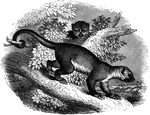
Kinkajou
"Of this genus there is a single species. A graceful animal, somewhat smaller than a cat, found in Guiana,…

Cynogale
"Of this there is but a single species, the Cynogale Benneti. Its body is about eighteen inches…
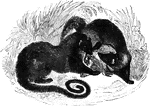
Pougonie
"P. typus, is of a yellowish brown, marked with three ranges of obscure spots on the back.;…

Euplere
"The single species of this genus, E. Goudotti, is of a slender form, about a foot in length,…
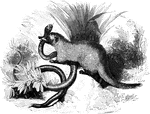
Eqyptian Ichneumon
Species of the genus Mangouste. This animal bears a close resemblance to the weasel tribe,…

Jackal
"The pupil of the eye is round; the color yellowish gray above; thighs and legs yellow; ears ruddy;…

Police Headquarters
"Interior of the outbuilding attached to Marshal Kane's Police Headquarters, Holliday Street, Baltimore-…

Battle of Cedar Mountain
"Battle of Cedar Mountain, fought Saturday, August 9th, 1862, between the Federal troops commanded by…

Campaign in Kentucky
"The campaign in Kentucky, Federal troops under General Johnston, advancing on the Louisville and Nashville…

Canada Lynx
"The Canada Lynx of the Indians, has a round, broad head, large eyes, strong teeth, ears acute and tipped…

Weasel
An animal of the genus Mustela, having a long slender body, short legs, long slender tail, and light…
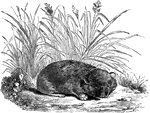
Calling Hare
"It has a head loner than usual with hares, and thickly covered with cur, even the tip of the nose;…

Black Agouti
"Is considerably smaller than the common agouti, being about the size of a rabbit, while the species…
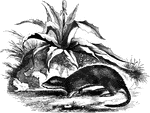
Swinder's Aulacoe
"This is the size of a rabbit, of a brown color, with short legs and a long body, covered with short…
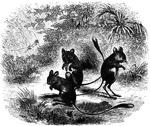
Jerboas
"These animals have the head large and rabbit-like; the ears long and pointed; the eyes full; the tail…

Jerboas
"These animals have the head large and rabbit-like; the ears long and pointed; the eyes full; the tail…
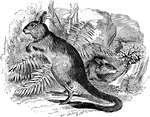
Cape Helamys
"These animals have a large head, a long body, long pointed ears, large eyes, and long hind-legs used…

Rock Rat
Petromys Typicus. "These animals move upon the hind-legs, which are not much larger than the fore-ones;…

Anne
"Capture of the British steamer Anne laden with arms and munition of war for the Confederates,…

Kentucky Shore
"The Federal Army, under General Pope, landing on the Kentucky Shore, opposite New Madrid, April 1st,…
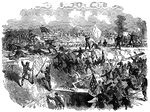
Arkansas Post
"The capture of Arkansas Post, Ark. General Stephen G. Burbridge, accompanied by his staff, planting…

General Daniel Tyler
"General Tyler, born in Brooklyn, Windham County, Conn., January 7th, 1797, died in New York city, November…
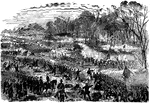
Battle of Champion Hills
"Battle of Champion Hills, May 16th, 1863- the formidable position of General Pemberton carried by Generals…
!["Presentation of colors to the Twentieth United States [African American] Infantry, Colonel Bartram, at the Union League Clubhouse, New York, March 5th, 1864. The Twentieth Regiment, United States [African American] Troops, left Riker's Island at nine o'clock on the 5th of March, 1864, on board the steamer <em>John Romer</em>, and were conveyed to the foot of Twenty-first Street, East River, New York, where they were disembarked and formed in regimental line, and marched to Union Square, arriving in front of the Union League Clubhouse at one o'clock. A vast crowd of citizens, of every shade of color and every phase of social and political life, filled the square and streets, and every door, window, veranda, tree and housetop that commanded a view of the scene was peopled with spectators. Over the entrance of the clubhouse was a large platform, ornamented with flags and filled with ladies. In the street was another platform, tastefully decorated and occupied by prominent citizens. From the stand the colors were presented by President King of Columbia College, who addressed them with warmth and eloquence. After the presentation ceremony was over the men stacked arms and partook of a collation provided for them."— Frank Leslie, 1896](https://etc.usf.edu/clipart/11700/11749/presentcolor_11749_mth.gif)
Presentation of Colors
"Presentation of colors to the Twentieth United States [African American] Infantry, Colonel Bartram,…


